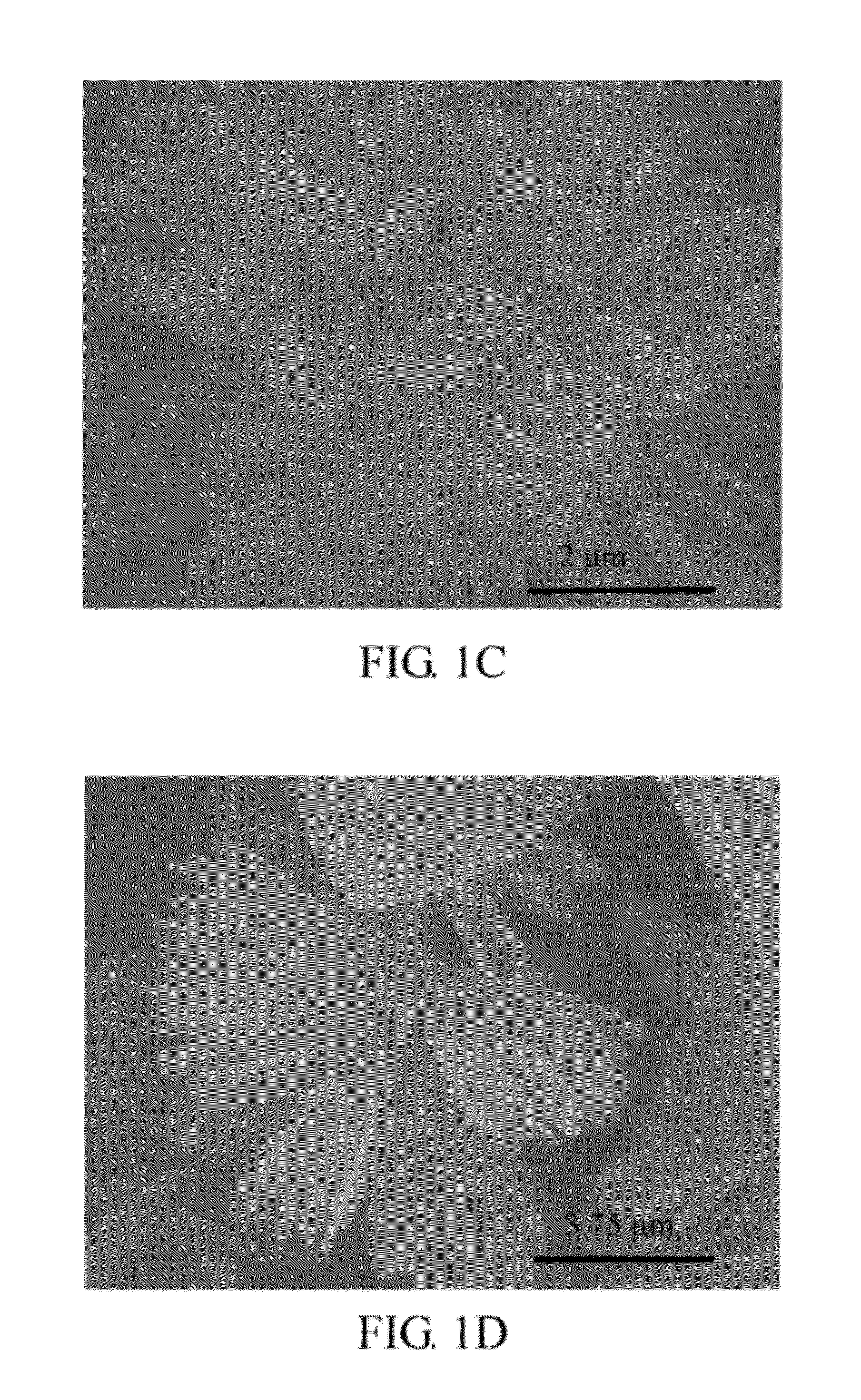Ferrous phosphate (II) powders, lithium iron phosphate powders for li-ion battery, and methods for manufacturing the same
a technology of iron phosphate and lithium iron phosphate, which is applied in the direction of sustainable manufacturing/processing, non-metal conductors, cell components, etc., can solve the problems of large and non-uniform grain size of lifepo/sub>4 /sub>powders, and the spinal structure of limn/sub>2/sub>o/sub>4 may collapse, and achieve uniform and small grain size, uniform and small
- Summary
- Abstract
- Description
- Claims
- Application Information
AI Technical Summary
Benefits of technology
Problems solved by technology
Method used
Image
Examples
embodiment 1
[0048]H3PO4 and NaHCO3 were mixed in a molar ratio of 1:3, and dissolved in de-ionized water (500 ml) to obtain a P-containing precursor solution. After the P-containing precursor solution was stirred for 30 mins, ferrous sulfate hydrate (FeSO4.8H2O) was added into the P-containing precursor solution, wherein the molar ratio of FeSO4.8H2O to H3PO4 was 3:2. After the reaction was completed, the product was washed with an ethanol solution, and then collected with centrifugation for twice. After the collected product was dried at 60° C. for 12 hours, ferrous phosphate (II) precursor powders (Fe3(PO4)2. 8H2O) were obtained.
[0049]The shapes of the ferrous phosphate (II) powders of the present embodiment were observed with a scanning electron microscope (SEM) (Hitachi S-4000), and the results are shown in FIGS. 1A-1D. As shown in FIG. 1A, the ferrous phosphate (II) powders have flat shapes in macro view, when the ferrous phosphate (II) powders were observed at the magnification of 10000×....
embodiment 2
[0055]The LiFePO4 powders of the present embodiment were prepared with the ferrous phosphate (II) powders of Embodiment 1, except only 5 wt % of sugar was added. The shapes of the LiFePO4 powders of the present embodiment were also observed with a scanning electron microscope (SEM) (Hitachi S-4000). The result shows that the LiFePO4 powders of the present embodiment have a similar shape to that of Embodiment 1, and especially most of the powders are flake powders that one end of each of the flake powders connects to each other to form a connecting center, as shown in FIG. 5.
embodiment 3
[0056]The LiFePO4 powders of the present embodiment were prepared with the ferrous phosphate (II) powders of Embodiment 1, except only 10 wt % of sugar was added. The shapes of the LiFePO4 powders of the present embodiment were also observed with a scanning electron microscope (SEM) (Hitachi S-4000). The result shows that the LiFePO4 powders of the present embodiment have similar shape to that of Embodiment 1, and especially most of the powders are flake powders that one end of each of the flake powders connects to each other to form a connecting center, as shown in FIG. 6.
PUM
| Property | Measurement | Unit |
|---|---|---|
| length | aaaaa | aaaaa |
| length | aaaaa | aaaaa |
| molar ratio | aaaaa | aaaaa |
Abstract
Description
Claims
Application Information
 Login to View More
Login to View More - R&D
- Intellectual Property
- Life Sciences
- Materials
- Tech Scout
- Unparalleled Data Quality
- Higher Quality Content
- 60% Fewer Hallucinations
Browse by: Latest US Patents, China's latest patents, Technical Efficacy Thesaurus, Application Domain, Technology Topic, Popular Technical Reports.
© 2025 PatSnap. All rights reserved.Legal|Privacy policy|Modern Slavery Act Transparency Statement|Sitemap|About US| Contact US: help@patsnap.com



